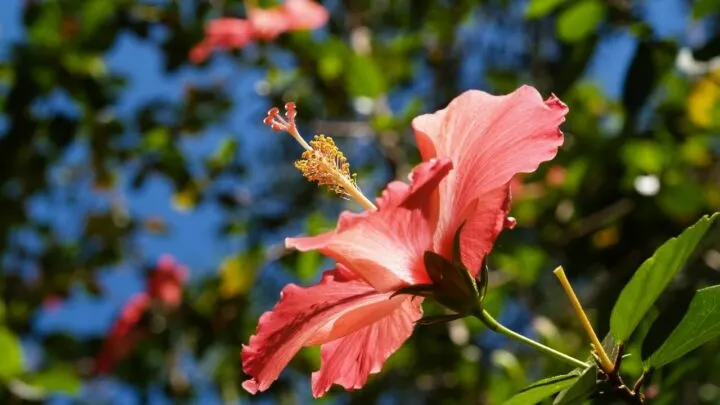How to overwinter hibiscus?
To have your hibiscus survive the winter, you might need to overwinter it indoors.
Tropical hibiscus plants need to be overwintered indoors. They aren’t tolerant of frost.
Hardy hibiscuses are.
If you’re unsure of the type you have, the colors on the plant are a good indicator.
- Dark, glossy green leaves with bi-colored flowers are tropical.
- Hardy perennials have dulled green leaves with plain single-colored flowers. Usually pink, white, or red.
For hardy hibiscus plants, wintering them is just about getting them prepared for deep freezes.
Tropical hibiscus plants, however, need a more hands-on approach, especially if you have it planted in garden soil.
So, if you’re now ready to learn how to overwinter hibiscus, better continue reading this article here.
How to Overwinter Hibiscus
To overwinter hardy hibiscus prep it with mulch for deep freeze protection. Tropical hibiscus plants need to be overwintered indoors as temperatures below freezing will kill the roots. Hibiscus in garden soil needs dug up and transplanted in a planter then moved indoors before the first expected freeze date. Once inside, they can be kept alive with temperatures above 50 degrees Fahrenheit (10 degrees Celsius).

How to Overwinter Hibiscus
How to Overwinter Hardy Hibiscus
In wintering a hardy hibiscus, just add up to four inches of mulch material over the topsoil.
These plants can survive in temperatures as low as 20 degrees below freezing point.
The mulch should insulate the root zone, but it should leave enough space between the mulch and stems.
The only other step involved in preparing hardy hibiscus for winter is changing the fertilizer.
Around late Fall, hardy hibiscus plants go dormant.
When that happens, change the fertilizer from one that’s low in phosphorus to one that’s richer in phosphorus but lower in nitrogen.
Nitrogen is what encourages growth. Phosphorus, on the other hand, contributes to flowering, but it won’t do any growing until it re-emerges the following Spring.
Preparing the ground soil with a little phosphorous fertilizer with less nitrogen is best done during late Fall.
This will ensure that when the hibiscus does spring back up around April, it’ll bounce back to life with an abundance of blooms.
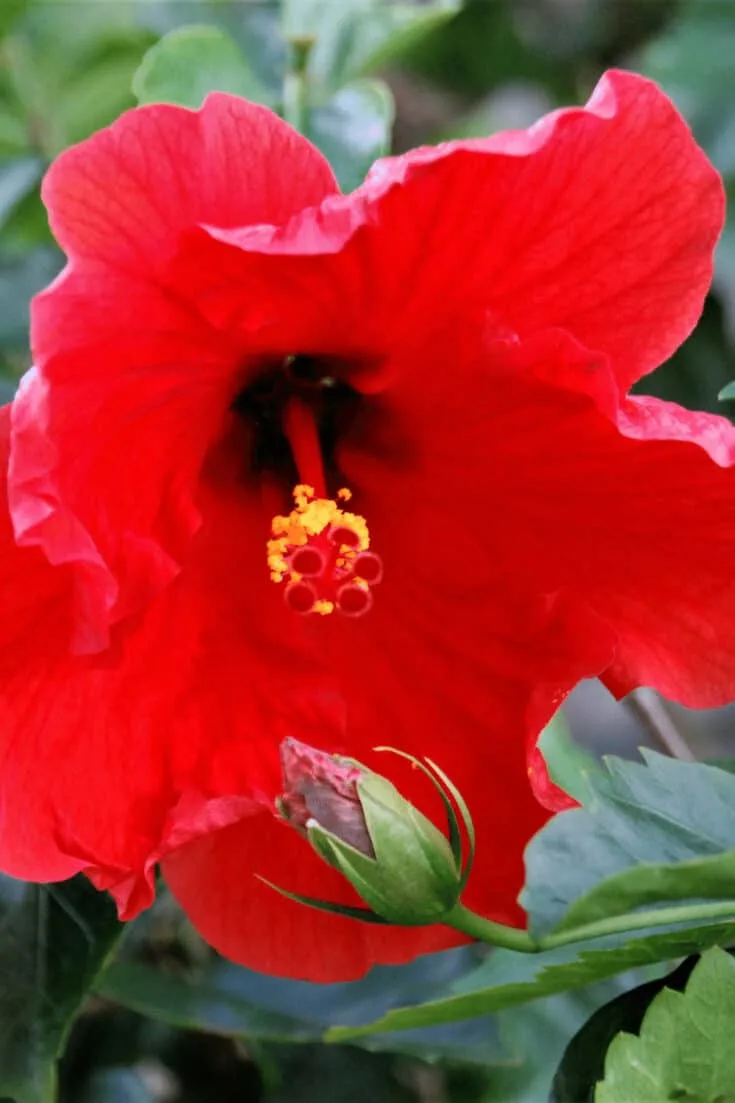
Provide mulch to protect hibiscus from deep freeze outdoors over winter
How to Overwinter Tropical Hibiscus
To overwinter a tropical hibiscus, it can’t be left in the ground.
Temperatures below freezing (-32 degrees Fahrenheit) will damage the hibiscus, and below 25 degrees Fahrenheit is likely to kill it.
To protect these plants for up to a few days of colder than usual temperatures, you can apply a thick layer of mulch of four inches, and put a temporary frost cloth over the plant.
When the weather takes an unexpected turn for the worse, an emergency course of action is to take any thick cover, whether it’s a cotton bed sheet or a car cover, and place it over the plant.
Raise the temperatures under the canopy using incandescent Christmas light bulbs.
It needs to be the old-fashioned lights and not LED lights as those produce lower heat.
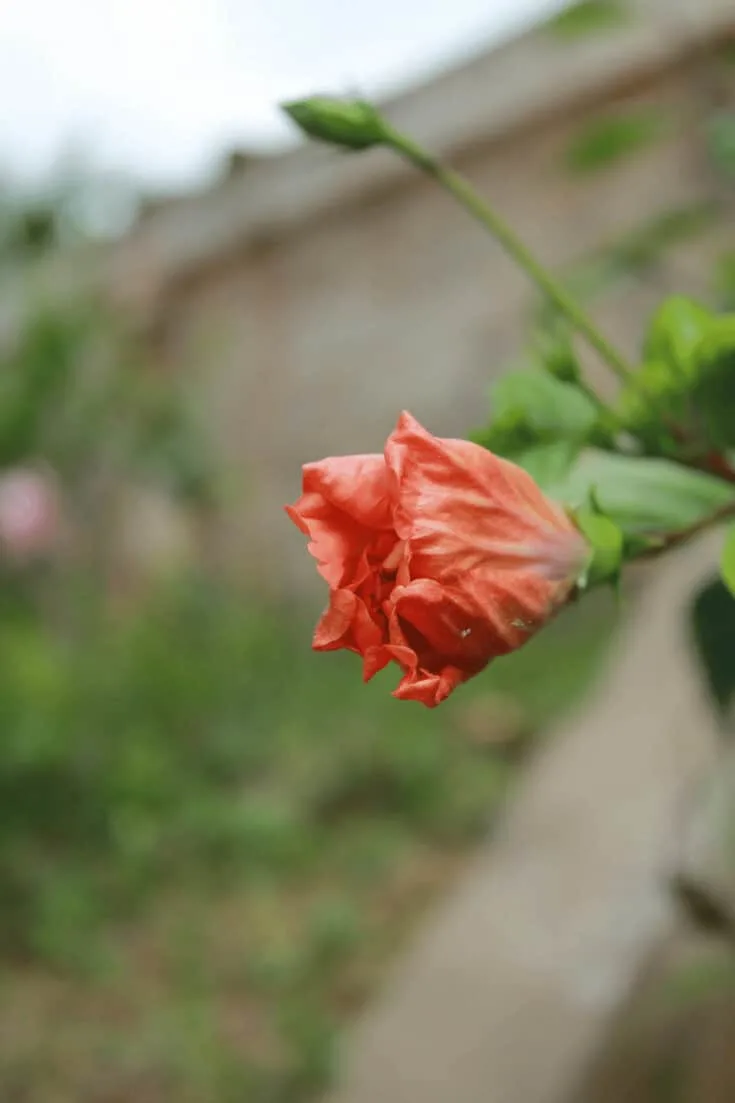
Temperatures below freezing will damage the roots of the hibiscus
If temperatures will be below freezing consistently, a tropical hibiscus can’t stay in the garden. You need to remove it from the garden soil, pot it, and bring it indoors.
Hibiscus needs at least 50 degrees Farhenheit for survival (10 degrees Celsius).
This will fit in with most of your other houseplants.
Just make sure to keep it away from direct sources of heat and drafts.
Removing ground planted hibiscus needs to be done by digging around the root ball to a depth of around 8 to 10 inches.
Use a spade to sever the roots then place them in a large planter.
This should be done before the first freeze, preferably a few days to a week before the temperatures become unsuitable to give you a chance to treat any pests.
Rinse the roots and wipe the leaves before bringing the plant inside.
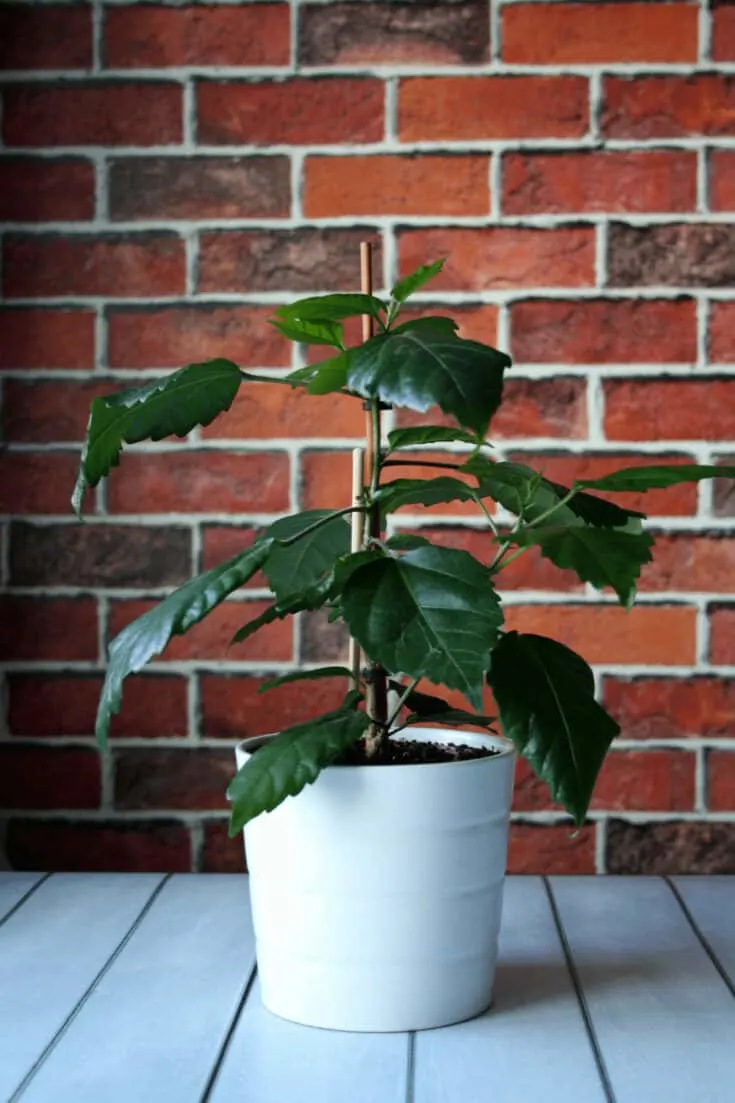
Tropical hibiscus needs to be overwintered indoors
Caring for a Tropical Hibiscus Indoors Over the Winter
How you care for your hibiscus depends on whether you want it to bloom throughout the winter, or if you’re merely content to have it survive.
Indoors, the growing conditions for blooming will need more than two hours of indirect sunlight and temperatures closer to 70 degrees Fahrenheit.
If all you want to do is have your hibiscus survive the winter so you can replant it in the garden by Spring, then temperatures above 50 degrees Fahrenheit is all you need (10 degrees Celsius).
In terms of watering, you only need to keep the soil from drying out.
If you want to keep your hibiscus blooming all year, it’ll need more water.
The best variety for all-year blooms is the Chinese Hibiscus.
Place this plant near a west-facing window and you’ll get prolific blooms all year.
If it’s not actively blooming, it’ll drink far less. In which case, you only need to water it enough to prevent the soil from drying out.
After all, much of the water you give the plant will be lost to evaporation rather than the plant actively drinking if you aren’t encouraging blooming.
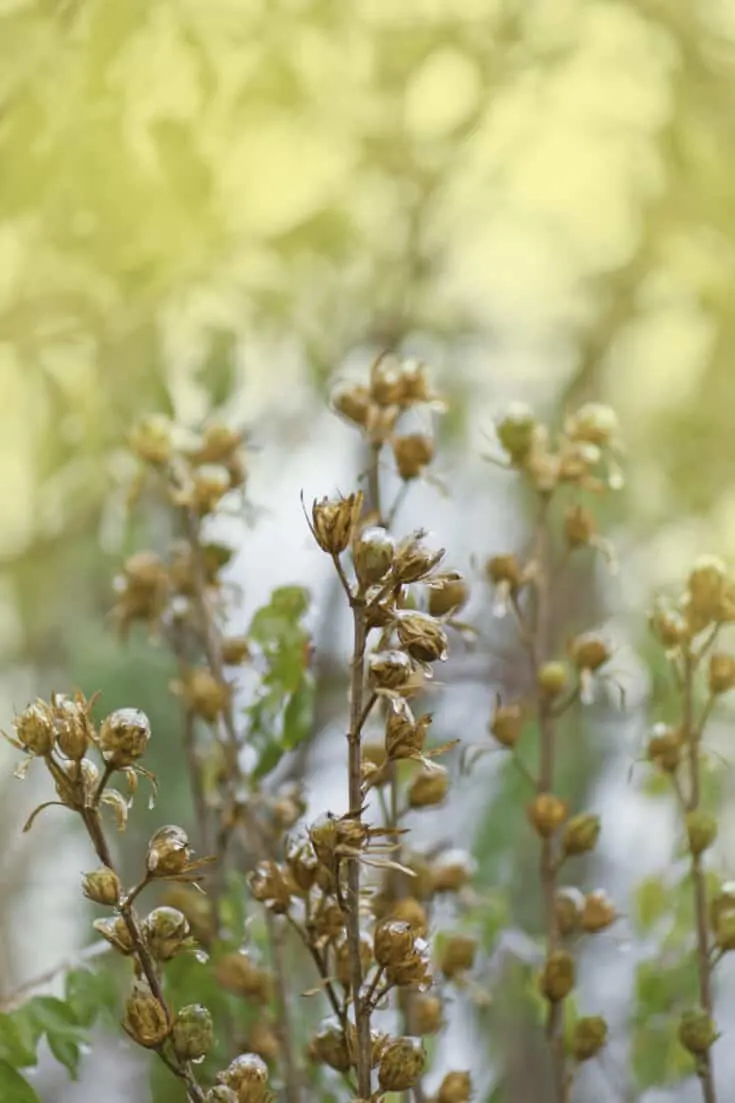
Temperatures for hibiscus need to stay above 50 degrees Fahrenheit (10 degrees Celsius) at all times
Hibiscus is one of the last perennials to emerge in spring according to Kansas State University.
So don’t worry if you don’t see any signs of life in spring as it takes some time for your hibiscus to resurge!
Frequently Asked Questions About How to Overwinter Hibiscus
Is it normal for hibiscus to shed all its leaves when it’s brought indoors?
It is common to experience a lot of leaf drop on the hibiscus when it is brought indoors, but it’s just because of stress. The leaves grow back once the plant acclimates to the indoor growing conditions.
Do tropical hibiscus plants go dormant in winter?
Hibiscus can act like they’re in a dormant phase when they don’t receive enough sunlight. Leaves will turn yellow and fall off when light is reduced. The key component a hibiscus needs to survive the winter is temperatures over 50 degrees Fahrenheit. Reducing everything else just stops the plant from growing. Warm temperatures keep it alive.

Daniel has been a plant enthusiast for over 20 years. He owns hundreds of houseplants and prepares for the chili growing seasons yearly with great anticipation. His favorite plants are plant species in the Araceae family, such as Monstera, Philodendron, and Anthurium. He also loves gardening and is growing hot peppers, tomatoes, and many more vegetables.

